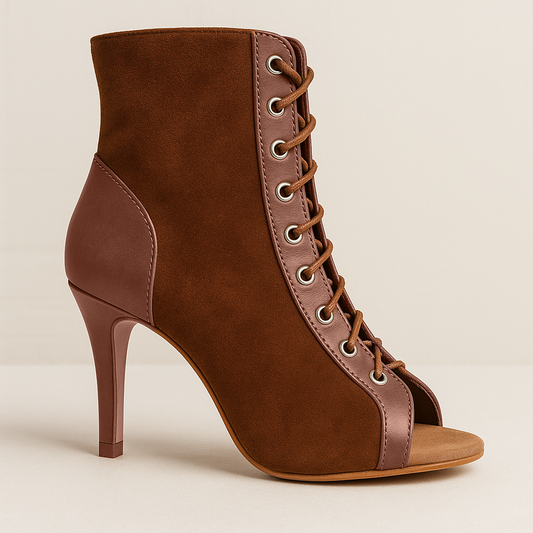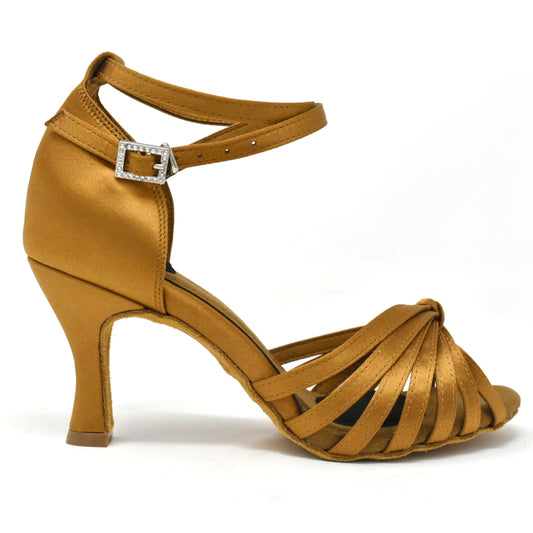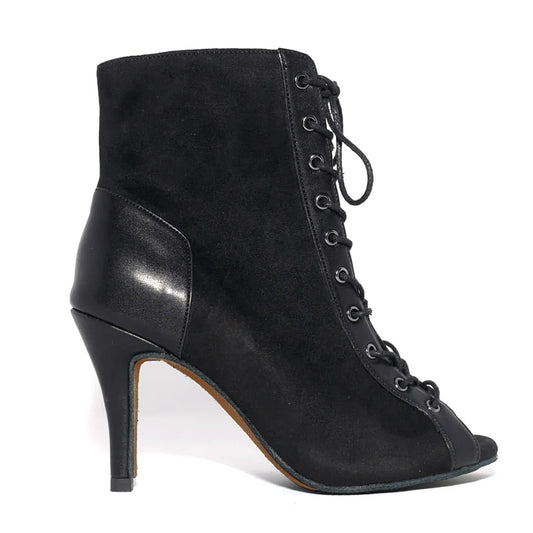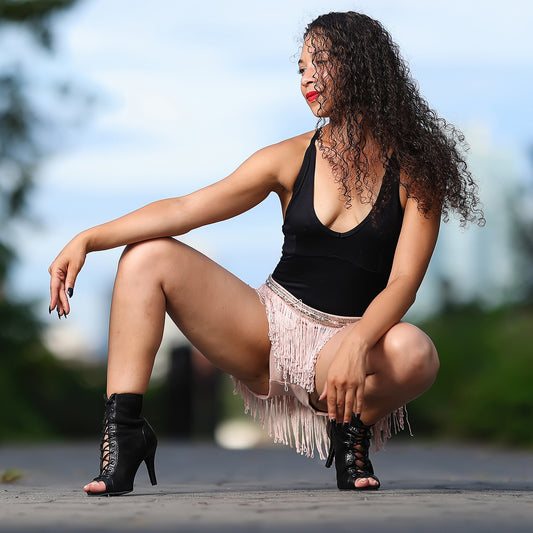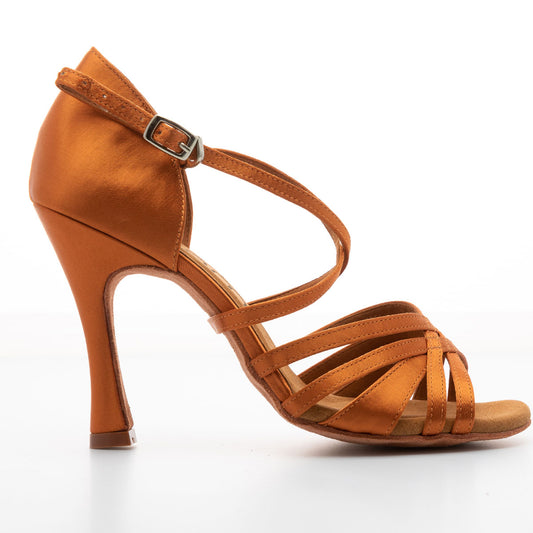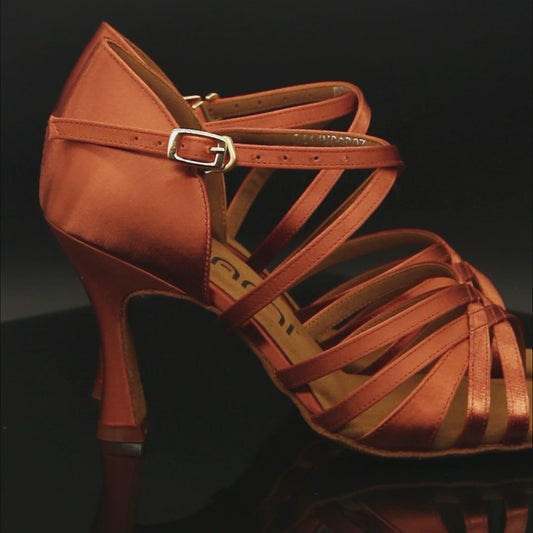
Most of us consider two things when shopping around for dance shoes, how the shoes look when worn, and how comfortable the heels are. The good news is, dance shoes have evolved over time, the designs are vast and there’s something for everyone. Of course, finding the perfect shoes will be a matter of personal preference. Still, it’s nice to know that we’re all spoiled for options!
How the shoe looks when worn and the heel styles go hand in hand. Shoes with chunky heels aren’t as flattering on certain outfits. In Latin dance, the heels come in different types but the most popular are flared heels and stilettos. Which one should you get? Let’s find out:
Flared Heels: The heels have a thick, curved design for added support and stability. The flared design boosts the contact surface area of the heel so the feet stay supported no matter how complex the dance movements are.
Stiletto Heels: Stilettos are designed for precision movements. Because the heels are thin and delicate, they make the legs appear longer and shapelier. The footpoint is also much neater because of the stilettos’ dainty design. But don’t let the thin heels’ dainty design fool you, the heels are stronger than they look. It will, however, take a lot of experience and practice to dance comfortably in stilettos.
Between the two heel designs, flared heels are traditionally worn in Latin dance. But some dancers prefer the height that stilettos give, hence, their popularity.
What's great about wearing stilettos is that the heels shift the body weight on the heels, providing complete power transfer. The way that stilettos shift the bodyweight pushes the pelvis forward and arches the back, creating a desirable form that visually enhances the performance.
Style
Which is more stylish, flared heels or stilettos? That will depend on your outfit. Generally, stilleto heels are best for form-fitting and short dresses because the style is meant to be seen, not hidden. Stilettos also accentuate the legs so your silhouette looks absolutely seamless.
Flared heels, on the other hand, look absolutely gorgeous in flowy dresses or long outfits. The way that the flowy dress moves with the shoes add a wow factor to your performance.
Fit
The shoes’ fit affects the wear time and their comfortability. And this goes no matter what kind of shoes you’re wearing for whatever reason, apart from dancing. An ill-fitting shoe is not only uncomfortable to wear, it also increases the risk of an injury.
Ideally, you want a pair of dance shoes that hug the feet the right way, not too tight, not too loose. If the fit is too tight, it won’t be long before your feet are ridden with painful blisters. If the fit is too loose, you might end up tripping in the middle of your routine.
Some shoes fit a specific foot shape so that’s something to keep in mind when shopping for dance shoes. If your foot shape is wide, choose wide-fitting shoes and vice versa if your foot shape is narrow. If your heel is narrow, opt for a pair of dance shoes with tapered heel cup. If you have high arches, go for shoes with straps that wrap around your arches.
When it comes to figuring the right size for your dance shoes, choose a shoe size that’s 1 to 2 sizes smaller than your street shoe size. The shoes will stretch to fit your size over time so it’s normal for dance shoes to be very snug when they’re new.
Which Heel Is Right For Me?
The right heel for you will depend on your foot shape, height, and weight as well as your balance and experience as a dancer. Again, flared heels are ideal for Latin dances because the heels are stable. Stilettos aren’t the most comfortable to wear but they’re popular among dancers who want the added height.
If you’re not used to wearing heels just yet, opt for the low flared heels to start. You’ll need all the support and stability you can get from these heels as a beginner. As you become more accustomed to dancing in heels, you can gradually shift to dance shoes with higher and thinner heels. It’s common for dancers to experiment with different heel heights for different performances.
Once you’re used to wearing heels, your choice will be a matter of personal taste, what looks best in a certain dress.
One thing to keep in mind if you’re a beginner is that dancing in heels demands strong feet and ankles. This means you have to train hard so your feet and ankles become strong enough to dance in high heels.
Apart from warming up with calf raises and point and flex exercise during rehearsals, shift your weight on the ball and inner sides of your feet as you dance. This technique helps build the right leg muscles for Latin dancing. Be mindful of the way you use your feet, the way you land, how you take each step, etc. Make sure that you are using those little leg muscles to build strength and stamina.
Here at Yami, we’re all about providing the best shoe style that matches your needs. We’d be more than happy to find the right shoe styles and heel recommendations according to your performance level. This goes regardless if you’re a beginner looking for your first pair of Yami dance shoes or an advanced-level dancer who wants the best of everything!

